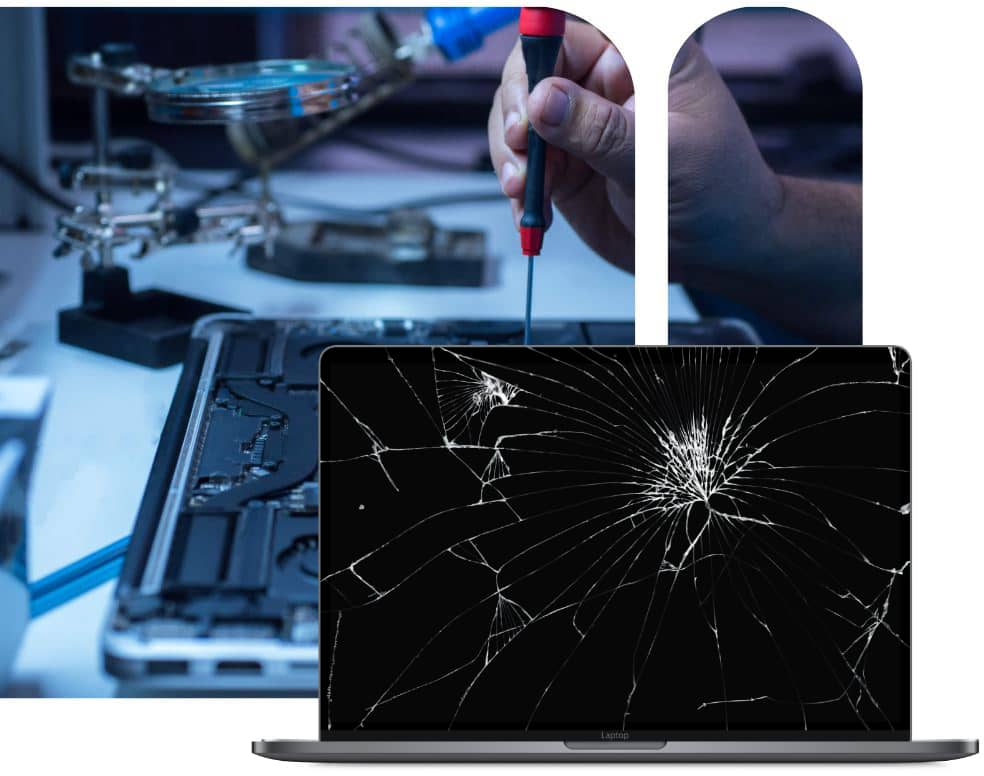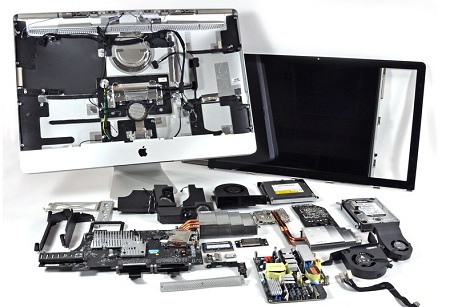Recognizing Device Fixing: Key Considerations for Effective Display Fixing and Motherboard Fixing
When it concerns gadget fixing, understanding the nuances of screen and motherboard problems is essential. You'll require the right devices and a grasp of various display kinds to deal with fixings efficiently. Usual troubles often arise, and knowing exactly how to detect them can save time and irritation. What are the vital steps and safety measures you should keep in mind to guarantee a successful fixing? Let's discover this additionally.
Necessary Tools for Screen and Motherboard Fixes
When dealing with display and motherboard fixings, having the right devices is important for success. You'll require an accuracy screwdriver set, as these small screws call for specific sizes to stay clear of removing. A spudger or plastic pry device aids you securely open devices without harming the casing. Do not fail to remember a set of tweezers; they'll help in managing little parts.
For display repairs, a suction cup can raise the display screen without splitting it. You must likewise have a heat gun or hairdryer handy to loosen up sticky. A multimeter is indispensable for identifying motherboard issues, allowing you to look for shorts or damaged connections.
Finally, an anti-static wrist band will safeguard sensitive electronic components from fixed electrical power. With these devices in your collection, you're well-equipped to handle many screen and motherboard repairs efficiently and efficiently.
Recognizing Different Display Kinds and Their Repair Services
Numerous people do not realize that displays come in various kinds, each with its own fixing considerations. On the various other hand, OLED and AMOLED displays provide vibrant colors and much deeper blacks, but they're much more fragile, requiring specialized methods for repair work.
Some screens have additional layers, like touch sensing units, which can make complex repair services. Understanding these distinctions will certainly conserve you time and effort, making certain a smoother repair process.
Usual Motherboard Issues and Diagnostic Methods
When your gizmo begins acting up, the motherboard can be the wrongdoer. You'll want to recognize the indicators of motherboard failing and understand just how to use analysis devices efficiently. Allow's explore typical repair methods to obtain your tool back in working order.
Signs of Motherboard Failing
Although a computer system's motherboard is often considered provided, identifying the signs of its failure can save you money and time over time. If your computer system suddenly won't boot or shows arbitrary shutdowns, that's a red flag. You might additionally see uncommon beeping seems during start-up, which typically show equipment concerns. Regular crashes or ices up, specifically when running requiring applications, can indicate a stopping working motherboard. Furthermore, if peripherals like USB devices aren't recognized or your system experiences getting too hot, these symptoms could aim to motherboard issues. Frequently inspecting for physical damages, like scorched areas or swelling capacitors, is essential. Being aggressive about these indications will certainly aid you attend to potential failings before they rise.
Analysis Tools Introduction
Identifying prospective motherboard issues is simply the very first step; knowing just how to diagnose them successfully can conserve you a great deal of stress. To start, you'll intend to have a multimeter convenient. This tool helps determine voltage and resistance, permitting you to identify defective elements. Next, consider using a POST (Power-On Self-Test) card. It gives you error codes that can determine details problems during boot-up. Additionally, software diagnostics can give understandings into hardware performance, assisting you area abnormalities. Don't neglect visual assessments either; melted parts or bulging capacitors can signify serious concerns. By utilizing these diagnostic devices, you can streamline your troubleshooting process and tackle motherboard problems with confidence.
Usual Repair Strategies
Repairing common motherboard problems calls for a methodical strategy to guarantee you tackle the problem effectively. Determine the signs and symptoms-- unresponsive displays, arbitrary shutdowns, or failure to boot. Inevitably, a methodical method not just fixes the current issue yet additionally enhances your general fixing skills.
Step-by-Step Guide to Screen Replacement
Replacing a damaged display can appear daunting, yet with the right devices and a little persistence, you can tackle it on your own. Gather your tools: a screwdriver set, a suction mug, and a plastic prying tool. Beginning by powering off your tool and removing any type of screws near the display. Utilize the suction cup to gently lift the screen, creating a tiny gap. Insert the prying device into the void to carefully remove the screen from the gadget's body.
When you've gotten rid of the damaged screen, straighten the brand-new screen and attach the cable televisions securely. Power it on, and enjoy your newly replaced screen!
Repairing Motherboard Troubles: Idea
When your gadget isn't powering on or acting oddly, it could be a motherboard issue. You'll wish to acknowledge common signs and symptoms and gather the best diagnostic devices before you start fixing. Allow's check out the necessary steps to recognize and fix those bothersome motherboard problems.
Usual Signs Recognized
Determining common signs and symptoms of motherboard problems can conserve you time and disappointment throughout troubleshooting. If your tool will not power on, that's typically a clear indicator of a motherboard issue. You could also discover random system collisions, which can indicate damaged elements. In addition, if you hear warning sounds during start-up, it's your motherboard attempting to communicate a mistake. Overheating can also be a sign, recommending that there's a problem with power distribution or cooling. In addition, if peripherals aren't recognized or you see distorted graphics, these might direct to motherboard breakdowns. By identifying these symptoms early, you can take the you could try this out necessary actions to detect and fix your tool effectively. Remember, dealing with these signs immediately can prevent further damages.
Analysis Devices Review
To effectively troubleshoot motherboard problems, having the right diagnostic tools at your disposal can make all the difference. Start with a multimeter to check voltage levels and connection on numerous parts. This device assists you determine power problems or short circuits. Next, use a POST (Power-On Self-Test) card to detect boot troubles by showing error codes my company that indicate specific failings. A thermal electronic camera can additionally be vital, as it helps place getting too hot elements that may lead to motherboard failing. Ultimately, having a reliable power supply tester warranties that your power resource isn't triggering the issues. By utilizing these tools, you'll gain beneficial insights, enabling you to identify problems extra precisely and efficiently.
Repair Service Process Actions
Next off, remove the back cover to access the motherboard. Utilize a multimeter to inspect the voltage throughout various parts of the motherboard, ensuring they're running within appropriate ranges.

Safety And Security Safety Measures During Gizmo Repair Works
While fixing gadgets can be rewarding, it's vital to prioritize your safety throughout the procedure. Start by disconnecting the device and eliminating batteries to prevent any type of electrical dangers. Usage appropriate devices to avoid slides or injuries; a dedicated toolkit can make all the difference. Constantly operate in a well-lit location and maintain your work area arranged to minimize mishaps.
Wear shatterproof glass to shield your eyes from tiny particles, and think about handwear covers to stay clear of cuts or scrapes. Beware with fragile components, as they can conveniently damage. If you're handling batteries, verify they're useful link not swollen or dripping, as this can position a severe risk.
Acquaint on your own with the materials you're working with, and never rush the repair service. Taking your time will aid you remain concentrated and risk-free. Adhering to these safety measures will add to a smoother and safer repair experience.
When to Seek Specialist Help for Fixings
Even with safety and security preventative measures in place, there are times when taking on a gizmo repair work could be more than you haggled for. They have the tools and experience to analyze and fix damage that could worsen if left neglected.
Another sign is when you're unsure regarding the fixing process. Keep in mind, trying a repair work without the appropriate knowledge can lead to additional damages and higher costs.

Often Asked Concerns
The length of time Does a Regular Display Fixing Take?
A regular display fixing normally takes around thirty minutes to an hour, relying on the gadget and complexity - MacBook screen and Motherboard repairs in South Africa. If you've got the right tools and components, you can quicken the procedure significantly
Can I Replace a Screen Myself Without Experience?
You can replace a display on your own without experience, however it's dangerous. You might harm your tool additionally or nullify the guarantee. If you're uncertain, consider looking for specialist assistance for a much more dependable repair.
What Is the Price Array for Motherboard Fixes?
The cost for motherboard repairs commonly varies from $100 to $300, depending upon the damage and the tool. It's important to get quotes from numerous repair service shops to assure you're obtaining a fair rate.
Are Reconditioned Parts as Trusted as New Ones?
Reconditioned parts can be trusted, however it depends on the top quality and source. You need to inspect warranties and testimonials before acquiring, as some refurbished things carry out virtually in addition to brand-new ones, while others may not.
Just How Can I Stop Future Display Damage?
To protect against future screen damages, you ought to purchase a resilient instance, use screen guards, avoid positioning your device in precarious areas, and handle it with treatment during day-to-day activities. Remain conscious of your surroundings!